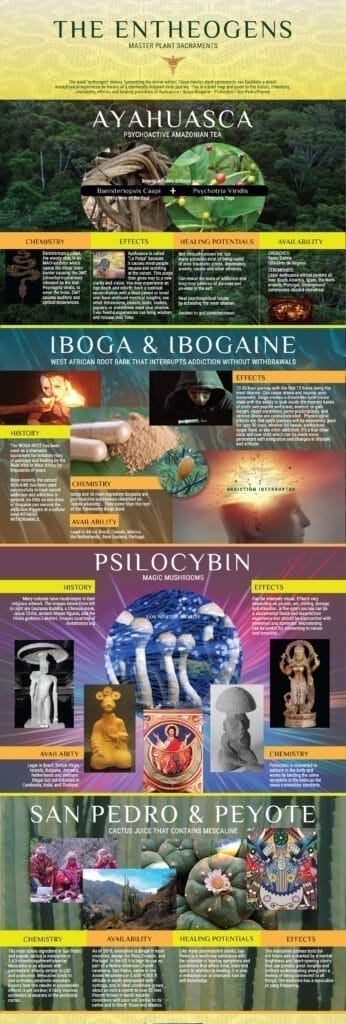Teonanácatl or flesh of the gods


( Psilocybe aztecorum( pictured), P. mexicana, P.baeocystis, and P. quebecensis, Family Hymenogastraceae ) and Xochipillior or Macuilxochitl-The Flower Prince
The texts always use the flower in an entirely spiritual sense, and the aim of the religious colleges was to cause the flower of the body to bloom: This flower can be no other than the soul. The association of the flower with the sun is also evident. One of the hieroglyphs for the sun is a four-petalled flower, and the feasts of the ninth month, dedicated to Huitzilopochtliupo, were entirely given over to flower offerings.
Dr Paul Pettennude, Ph.D.
In the statue’s depiction Xochipilli “is absorbed by temicxoch, ‘dream flowers’, as the Nahua say describing the awesome experience that follows the ingestion of an entheogen.
I can think of nothing like it in the long and rich history of European art: Xochipilli absorbed in temicxoch.
Robert Watson Gordon
(1980). The Wondrous Mushroom: Mycolatry in Mesoamerica.
The term “Teonanácatl” refers to a group of psychoactive mushrooms that were used in religious and spiritual ceremonies by various indigenous cultures in Mesoamerica, including the so-called Aztecs. The mushrooms mentioned, Psilocybe aztecorum, P. mexicana, P.baeocystis, and P. quebecensis, are among the species that have been identified as having been used for their entheogenic aka psychodelic properties. The so-called Aztecs and other Mesoamerican cultures attributed great spiritual significance to these mushrooms, often referring to them as the “flesh of the gods.” They believed that consuming these magic mushrooms allowed them to communicate with deities and enter into a heightened aka non ordinary state of consciousness. The effects of the mushrooms were considered to be a divine experience, and they were used in religious and spiritual rituals, healing ceremonies, and vision quests. Xochipilli, also known as Macuilxochitl, is a deity associated with flowers, beauty, pleasure, and love in so-called Aztec mythology. He represents the joy and ecstasy that can be experienced through artistic expression, dance, and music. Xochipilli is often depicted surrounded by flowers and holding various musical instruments. His association with flowers symbolizes the blooming of the soul and the connection between the spiritual and natural realms.
The description provided of Xochipilli being absorbed by “temicxoch” or “dream flowers” likely refers to the transformative and ecstatic experiences that can be induced by entheogens aka psychedelics, such as the magic mushrooms mentioned earlier. It suggests that the ingestion of these substances leads to a state of profound spiritual communion, where the individual becomes one with the divine and experiences a heightened or non-ordinary sense of consciousness and temporal enlightenment.
In the early 1800s, CE German scientist and explorer Alexander von Humboldt coined the term for the people of Tenochtitlan based on the word “Aztlán,”the ethnonym Aztec (Nahuatl Aztecah) means “people from Aztlan”, ( lit. White Land,” “Land of White Herons,” or “Place of Herons”), the traditional name of the Mexica’s ancestral, mythical homeland in the north, the American Southwest. Because of a common origin, the Mexica language shares features with those of the Hopi and the Utes.
Thus the right term is not Aztec but is Mexica or Tenochca. Tenoch, or Tenochca, who was a legendary patriarch who gave his name to Tenochtitlán, the city founded by him on an island in Lake Texcoco, in the Valley of Mexica.
DrAndrewMacLeanPagonMDPhD2023
( द्रुविद् रिषि द्रुवेद सरस्वती Druid Rishi Druveda Saraswati)
All rights reserved.
Recommend0 recommendationsPublished in PsilocybinSubscribe to Awake Events & Posts




